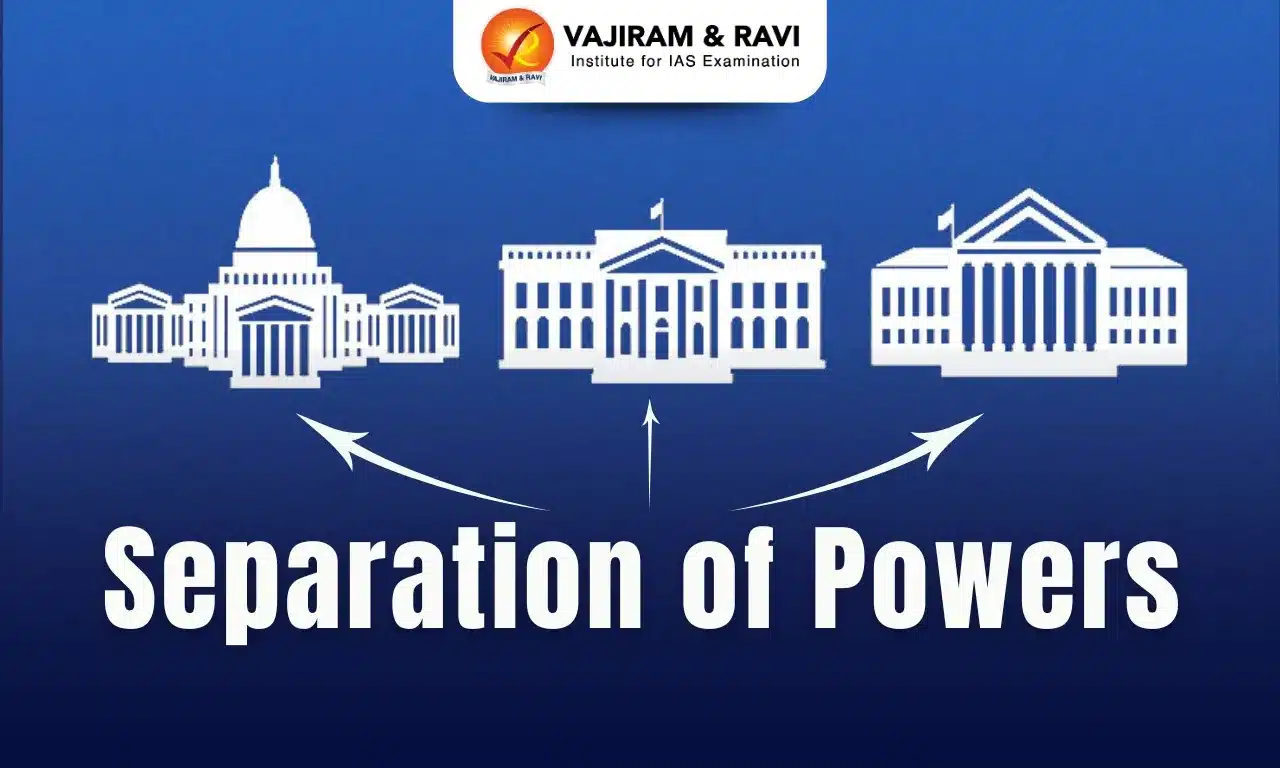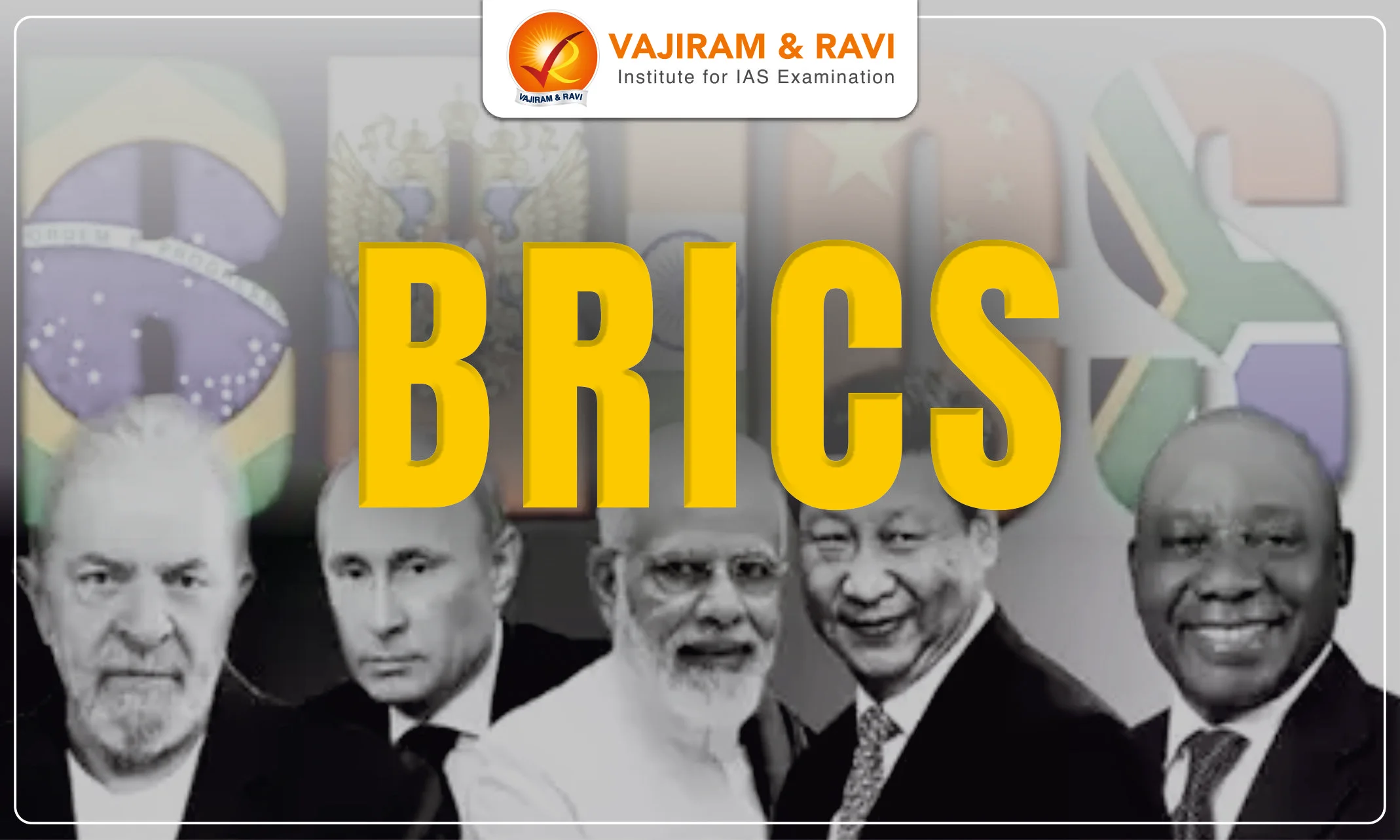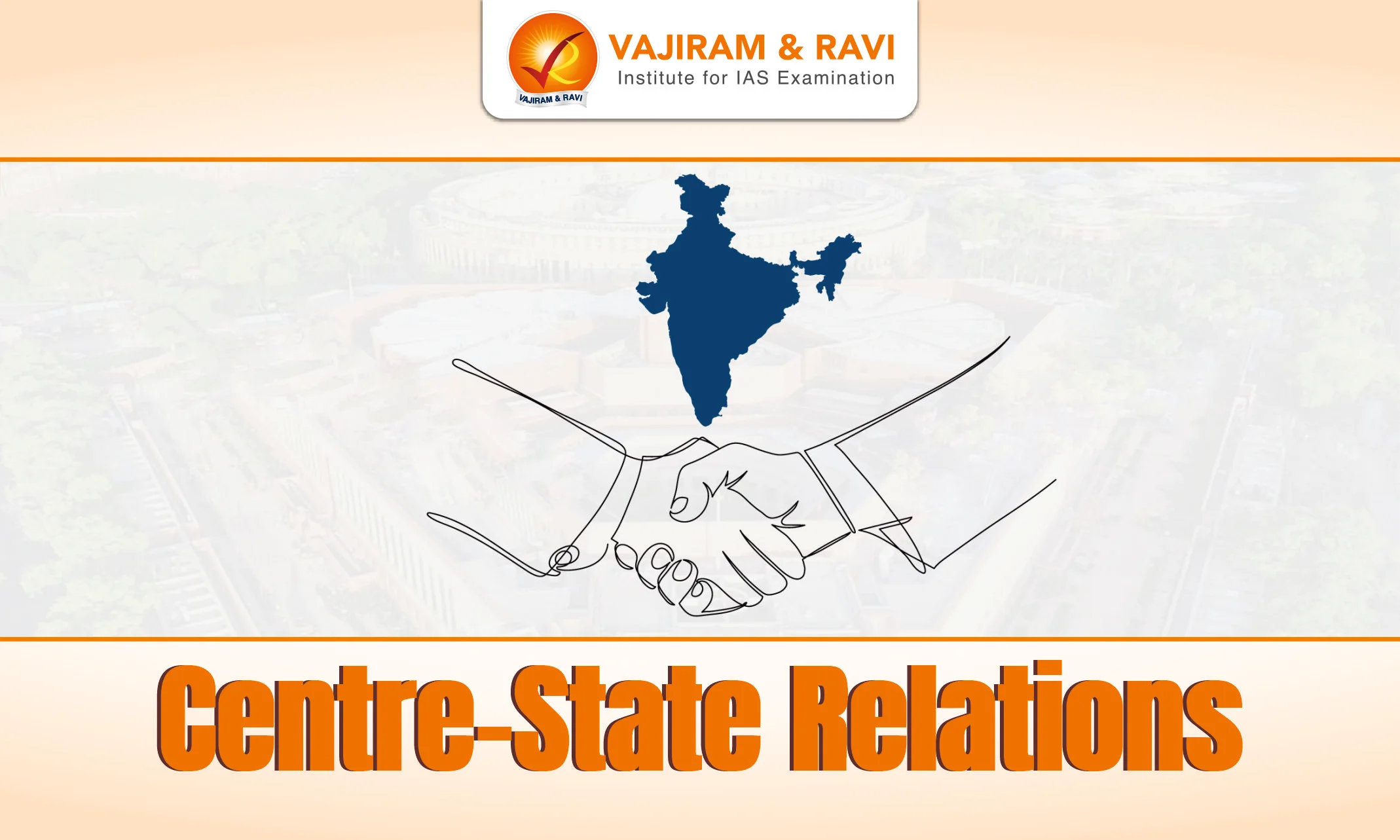What is the doctrine of separation of powers?
Separation of powers is the division of the legislative, executive, and judicial functions of government among separate and independent bodies.
- The Legislature makes laws, the Executive puts those laws into effect, and the Judiciary administers justice by interpreting the law and ensuring that the law is upheld.
- The purpose of separation is to limit the possibility of arbitrary excesses by the government.
- Separation of powers also prevents misuse of power or accumulation of power in a few hands, which thereby safeguards the society from arbitrary and irrational power of the state.
What is the origin and evolution of the doctrine of separation of powers?
- The first modern formulation of the doctrine of separation of power was given by the French political philosopher Montesquieu in The Spirit of Laws, 1748. Inspired by the English constitution, Montesquieu argued that liberty is most effectively safeguarded by the separation of powers.
- Later, The United States Constitution gave the doctrine of separation of powers in substance for the very first time where its provisions
- Article I granted powers to the legislature.
- Article II gave executive power to the President.
- Article III created an independent judiciary.
- In this spirit, the Constituent Assembly, while drafting the IndianConstitution, debated on inserting the provision ‘There shall be complete separation of powers as between the principal organs of the State-the Legislative, the Executive, and the Judiciary’ as one of the Directive Principles of the State Policies.
- Finally, Article 50 was inserted, which gave for the State to take steps to separate the Judiciary from the Executive in the public services of the State.
What are the provisions pertaining to the separation of powers between the three organs of state in India?
The Constitution of India has various implicit provisions for the separation of powers among the legislature, the executive, and the judiciary. However, in most cases, the separation is not water-tight, and there are instances of overlap in functions to ensure checks and balances.
Legislature and Executive
| Separation of powers | Functional overlap |
|
|
Table on separation of powers between Legislature and Executive
Judiciary and Executive
| Separation of powers | Functional overlap |
|
|
Table on separation of powers between Judiciary and Executive
Judiciary and Legislature
| Separation of powers | Functional overlap |
|
|
Table on separation of powers between Judiciary and Legislature
What are the various judicial pronouncements on the doctrine of separation of powers in India?
- Ram Jawaya Kapoor vs State of Punjab (1955): It was held that the Indian Constitution has not indeed recognized the doctrine of separation of powers in its absolute rigidity, but the functions of the different parts or branches of the government have been sufficiently differentiated.
- Golak Nath vs State of Punjab (1967): In this case, the judges observed that the three organs of the government are expected to exercise their functions within their limits and keeping in mind certain encroachments assigned by the Constitution.
- Indira Gandhi vs Raj Narain (1975): The Supreme court invalidated a clause of Article 329A inserted to immunize the election dispute to the Office of the Prime Minister from any kind of judicial review. In this case, It is held that the separation of powers is a part of the Basic structure.
- Kartar Singh vs State of Punjab (1994): It was stated that the function of the legislature is to make the law, the executive is to implement the law, and the judiciary to interpret the law within limits set down by the Constitution.
What are the issues associated with judicial legislation in India?
The term “judicial legislation” refers to the law pronounced, proclaimed, and declared by the judiciary, specifically the Supreme Court. This type of law is sometimes called “judicial law” or “Judge-made law.”
- The Supreme Court in Rattan Chand Hira Chand v. Askar Nawaz Jung (1991) stated, “The legislature often fails to keep pace with the changing needs and values nor is it realistic to expect that it will have provided for all contingencies and eventualities. It is, therefore, not only necessary but obligatory on the courts to step in to fill the lacuna”.
- Some of the instances of judicial legislation include-
- The collegium system out of The Second Judges case (1993) and the Third Judges case (1998).
- Legalizing passive euthanasia in Aruna Shanbaug v. Union of India, (2011).
- ‘None Of The Above’ (NOTA) in elections as a Right in People’s Union for Civil Liberties (PUCL) case 2013.
- The Indian Constitution does not strictly follow the doctrine of separation of powers, but the functions of different parts of the government have been differentiated.
- The judiciary is not supposed to indulge in lawmaking, but there are instances where judicial legislation is justified.
- Judicial creativity can be justified in certain situations, such as when there is a peculiar issue at hand or when laws enacted need to fulfill the needs of the people.
- Judges make the law when there is a legal vacuum or no express principles of law. The impact of judge-made law can create credibility and reliability, but it can also create a sense of uncertainty and unwanted strife between the organs of the State.
Last updated on April, 2025
→ UPSC Notification 2025 was released on 22nd January 2025.
→ The UPSC Vacancy 2025 were released 1129, out of which 979 were for UPSC CSE and remaining 150 are for UPSC IFoS.
→ As per UPSC Notification, the last date to apply is 18th February 2025.
→ The UPSC Prelims 2025 is scheduled to be conducted on 25th May 2025 and UPSC Mains 2025 will be conducted on 22nd August 2025.
→ Apply once through it and aspirants can apply for various government exams conducted by UPSC.
→ The UPSC Selection Process is of 3 stages-Prelims, Mains and Interview.
→ UPSC Result 2024 is released with latest UPSC Marksheet 2024. Check Now!
→ UPSC Toppers List 2024 is released now. Shakti Dubey is UPSC AIR 1 2024 Topper.
→ Also check Best IAS Coaching in Delhi
Tags: quest separation of powers















